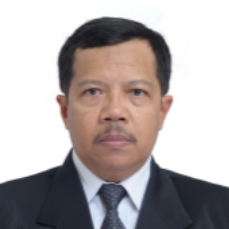
Ahmad Ashari
Work place: Department of Computer Science and Electronics, Gadjah Mada University, Yogyakarta, Indonesia
E-mail: ashari@ugm.ac.id
Website:
Research Interests: Computer systems and computational processes, Computer Architecture and Organization, Information Security, Network Architecture, Network Security, Data Structures and Algorithms
Biography
Dr. Ahmad Ashari, Currently he is an Associate Professor at The Department of Computer Science and Electronics Gadjah Mada University. His research interests include Computer Network, Distributed System, Pararel Computation and Web Technology.
Author Articles
Translation Movement Stability Control of Quad Tiltrotor Using LQR and LQG
By Andi Dharmawan Ahmad Ashari Agfianto Eko Putra
DOI: https://doi.org/10.5815/ijisa.2018.03.02, Pub. Date: 8 Mar. 2018
Quadrotor as one type of UAV (Unmanned Aerial Vehicle) is a system that underactuated. It means that the system has a signal control amount is lower than the degrees of freedom or DOF (Degree Of Freedom). This condition causes the quadrotor have limited mobility. If quadrotor is made to have 6 DOF or more (overactuated system), the motion control system to optimise the flight will be different from before. We need to develop overactuated quadrotor control. Quadtiltrotor as the development of quadrotor has some control signal over its DOF. So we call it as an overactuated system. Based on the type of manoeuvre to do, the transition process when the quad tiltrotor performs a translational motion using the tilting rotor need special treatment. The tilt angle change is intended that the quad tiltrotor can perform translational motion while still maintaining its orientation angle near 0°. This orientation angle can change during the undesirable rotational movement as the effect of the transition process. If additional rotational movements cannot be damped, the quad tiltrotor can experience multi overshoot, steady-state error, or even fall. Because of this matter, we need to develop flight control system to handle it. The flight control system of quad tiltrotor can be designed using a model of the system. Models can be created using quad tiltrotor dynamics by the Newton-Euler approach. Then the model is simulated along with the control system using the method of control. Several control methods can be utilised in a quad tiltrotor flight systems. However, with the implementation of LQG control method and Integrator, optimal translational control of the quad tiltrotor can be achieved.
[...] Read more.Document Summarization using TextRank and Semantic Network
By Ahmad Ashari Mardhani Riasetiawan
DOI: https://doi.org/10.5815/ijisa.2017.11.04, Pub. Date: 8 Nov. 2017
The research has implemented document summarizing system uses TextRank algorithms and Semantic Networks and Corpus Statistics. The use of TextRank allows extraction of the main phrases of a document that used as a sentence in the summary output. The TextRank consists of several processes, namely tokenization sentence, the establishment of a graph, the edge value calculation algorithms using Semantic Networks and Corpus Statistics, vertex value calculation, sorting vertex value, and the creation of a summary. Testing has done by calculating the recall, precision, and F-Score of the summary using methods ROUGE-N to measure the quality of the system output. The quality of the summaries influenced by the style of writing, the selection of words and symbols in the document, as well as the length of the summary output of the system. The largest value of the F-Score is 10% of the length ta of the document with the F-Score 0.1635 and 150 words with the F-Score 0.1623.
[...] Read more.A Proposed Digital Forensics Business Model to Support Cybercrime Investigation in Indonesia
By Yudi Prayudi Ahmad Ashari Tri K Priyambodo
DOI: https://doi.org/10.5815/ijcnis.2015.11.01, Pub. Date: 8 Oct. 2015
Digital forensics will always include at least human as the one who performs activities, digital evidence as the main object, and process as a reference for the activities followed. The existing framework has not provided a description of the interaction between human, interaction between human and digital evidence, as well as interaction between human and the process itself. A business model approach can be done to provide the idea regarding the interaction in question. In this case, what has been generated by the author in the previous study through a business model of the digital chain of custody becomes the first step in constructing a business model of a digital forensics. In principle, the proposed business model already accommodates major components of digital forensics (human, digital evidence, process) and also considers the interactions among the components. The business model suggested has contained several basic principles as described in The Regulation of Chief of Indonesian National Police (Perkap) No 10/2010. This will give support to law enforcement to deal with cybercrime cases that are more frequent and more sophisticated, and can be a reference for each institution and organization to implement digital forensics activities.
[...] Read more.Other Articles
Subscribe to receive issue release notifications and newsletters from MECS Press journals